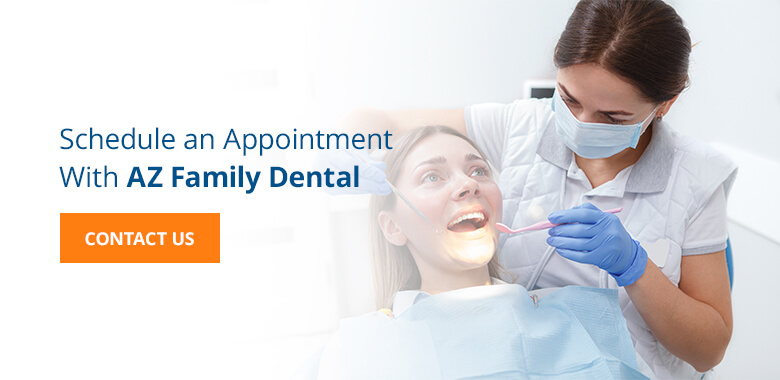Commonly referred to as SRP, scaling and root planing are deep cleanings that treat and reverse the effects of periodontal disease, also known as gum disease, caused by a bacterial infection in the gums and tissue.
SRP has other names as well: conventional periodontal therapy, non-surgical periodontal therapy, and deep dental cleaning. SRP is the first line of defense in your dentist’s periodontal arsenal. SRP can quickly end your gum disease battle, eliminating the need for invasive surgery.
In this blog, we’ll look at the following:
- What is scaling and root planing (SRP)?
- What qualifies a patient for SRP?
- How often should SRP be done?
- Scaling and root planing effectiveness
- Is SRP painful?
- How long does it take gums to heal after SRP?
What is Scaling and Root Planing (SRP)?

Scaling uses instruments such as periodontal scalers and periodontal curettes to remove the plaque and tartar on the tooth and tooth root. At your dental cleaning, the hygienist uses a hand instrument to scrape away the bacteria build-up. In some cases, ultrasonic tools that employ sonic vibrations may be used to loosen the calculus. The instruments also dip into the gum tissue and along the tooth root to eliminate the plaque and tartar buildup inflaming the gum.
A root planing procedure is when the dentist soothes and smooths the roots of your teeth, ensuring the gums will reattach where they’ve been pulled away to clean. Planing can also attack any problematic spots on the teeth or root that need extra attention.
What Qualifies A Patient For SRP?
Your dentist will base whether or not you are a candidate for SRP based on three qualifiers:
- The condition of the sulcus (the gap between teeth and gums)
- The existence of tartar beneath the gum line
- Bone loss/tooth loss
Your hygienist must perform SRP to get your mouth healthy again right away. If you put off SRP, your dental hygiene could be put at risk.
How Often Should SRP Be Done?
While it depends on the severity of your oral condition, SRP is typically recommended once every few years. SRP requires an initial procedure and follow-up appointments every three to four months for periodontal maintenance.
Scaling and Root Planing Effectiveness

SRP can stop the progression of gum disease immediately. Patients who take care of their teeth after the procedure usually eliminate the problem altogether. This saves the patient in three key ways:
- It saves time. SRP usually takes two visits to complete. Invasive surgery can take days or weeks to recover from.
- It saves money. SRP is cheaper than surgery or getting a crown to replace rotted teeth.
- It saves pain. SRP is performed quickly, and ultrasonic instruments cause little discomfort compared to the pain and hassle of surgery.
Is SRP Painful?
You will be numbed with a local anesthetic to avoid discomfort. Some pain is natural, but if you’re in intense pain afterward, you should call your dentist for a follow-up.
You may alleviate swelling and clean your mouth by rinsing with warm saltwater. Finally, practice good oral hygiene going forward, such as brushing and flossing, to avoid future plaque and tartar buildup.
How Long Does It Take Gums To Heal After SRP?
Following SRP procedures, your gums will need time to heal. Side effects from scaling and planing include some swelling, discomfort, and bleeding, which may vary depending on the state of your oral health and the extent of treatment required.

Published on: May 24, 2016
Updated on: November 17, 2023
